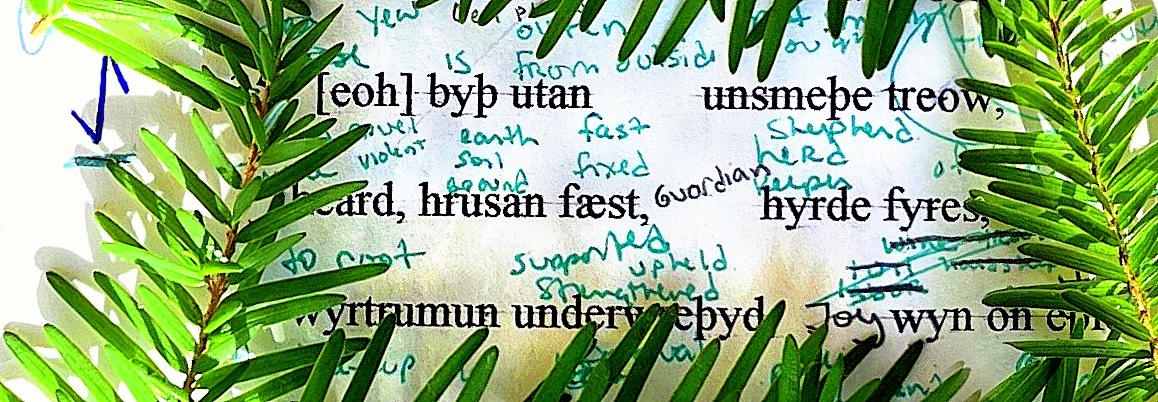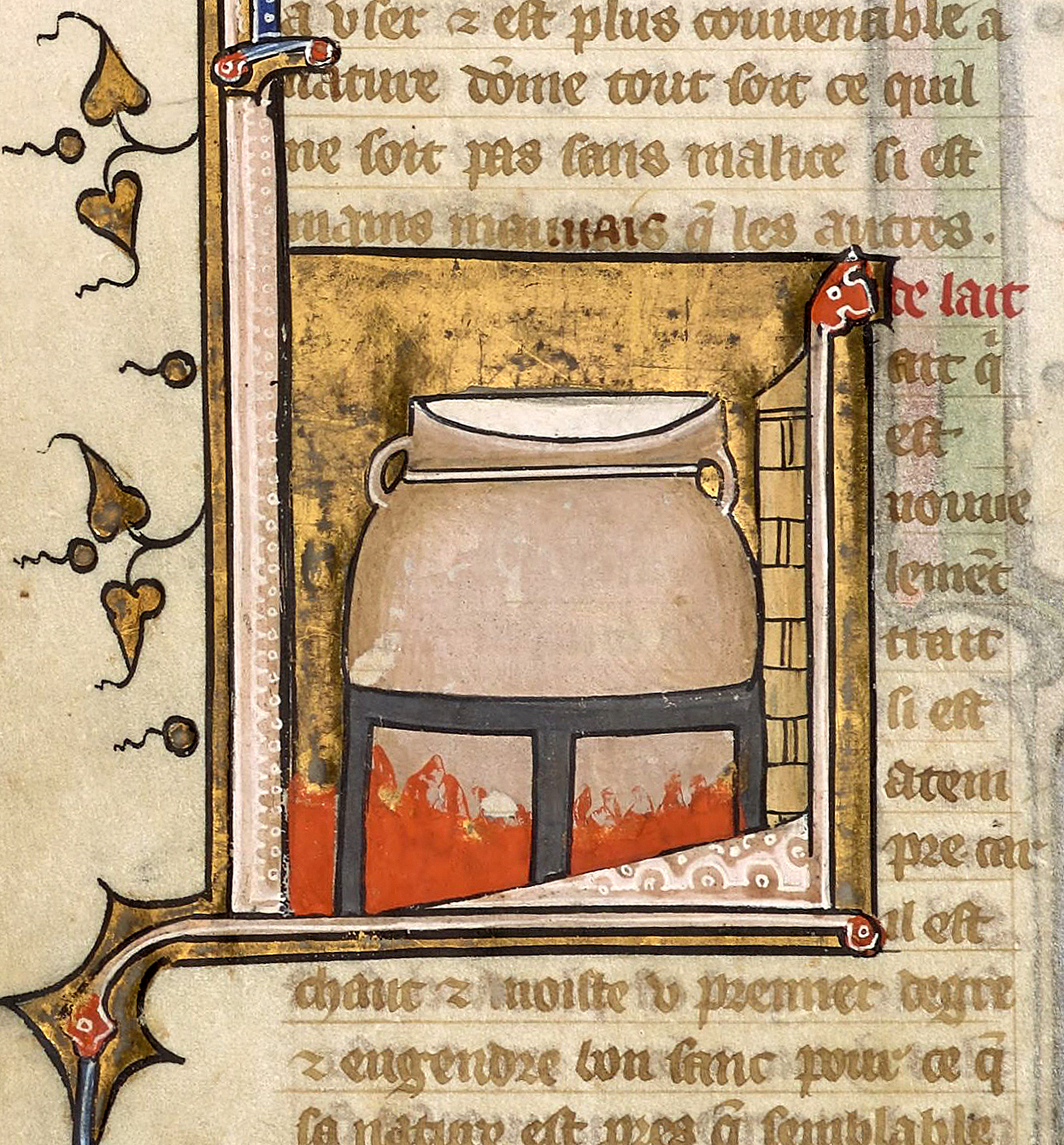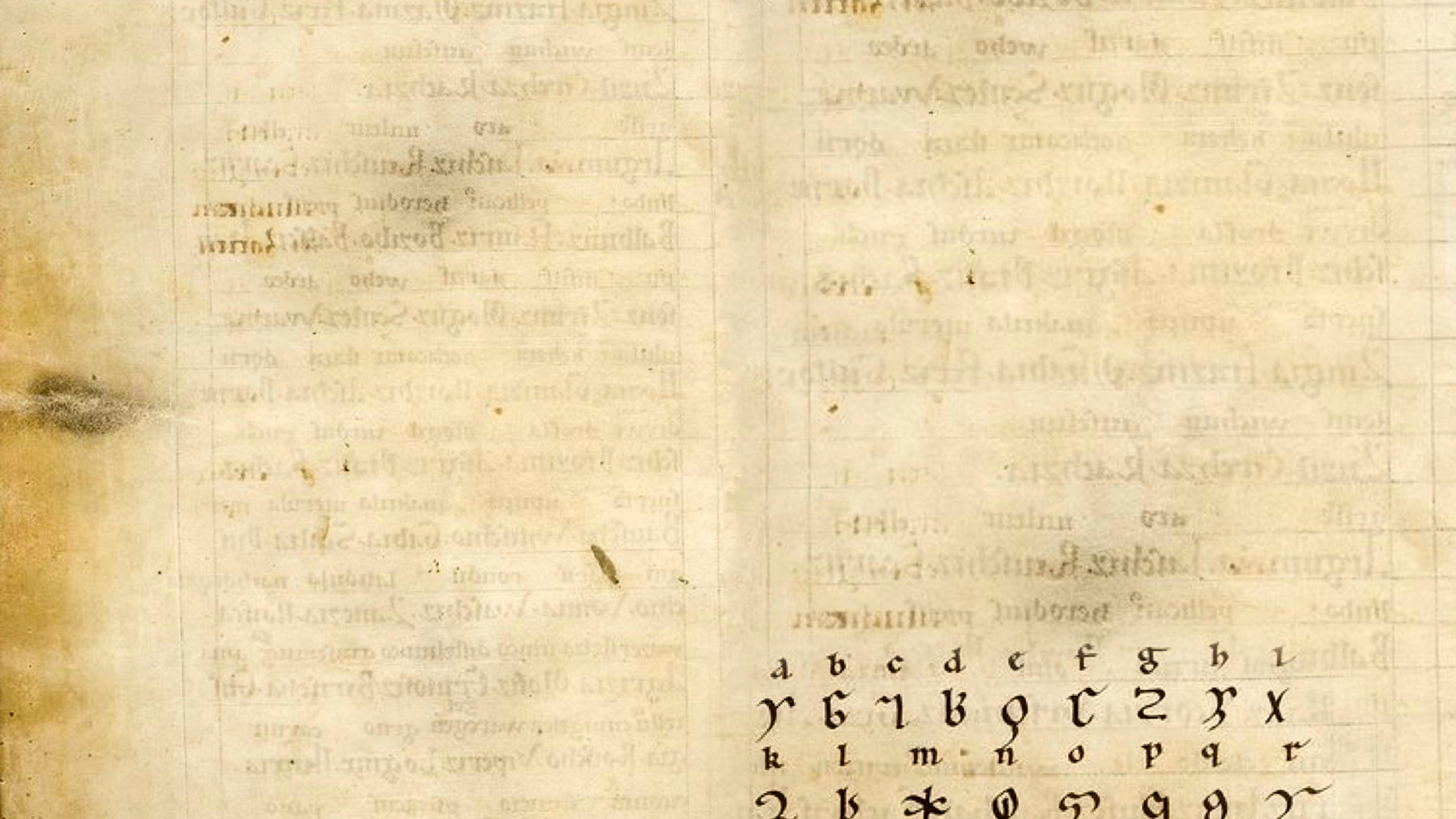 A tree does not show up in the Rune Poem unless it is important. You think they’ll let just any tree grow in these sacred woods? No. These are the god trees. Useful too. The oak grows here, you can eat the nuts, feed them to the pigs, make a drink from them, make boats from the wood, and the elders used to revere it as the world tree. The actual world tree is here too, the ash, also useful for making spears that won’t shatter on impact. Nice straight grained strong wood, that, holds it all up. The birch is a calendar tree, the first to green up in spring so you know the new year has come. You can eat the new shoots, tap it for the sap which makes a nice drink, and it provides twigs for divination. Everybody wants to know the future. And here we find the Yew: beloved, important, powerful, and deadly.
A tree does not show up in the Rune Poem unless it is important. You think they’ll let just any tree grow in these sacred woods? No. These are the god trees. Useful too. The oak grows here, you can eat the nuts, feed them to the pigs, make a drink from them, make boats from the wood, and the elders used to revere it as the world tree. The actual world tree is here too, the ash, also useful for making spears that won’t shatter on impact. Nice straight grained strong wood, that, holds it all up. The birch is a calendar tree, the first to green up in spring so you know the new year has come. You can eat the new shoots, tap it for the sap which makes a nice drink, and it provides twigs for divination. Everybody wants to know the future. And here we find the Yew: beloved, important, powerful, and deadly.
The sacred grove in the Rune Poem is very carefully planted. They placed the Yew next to the rune pair containing the Birch, the tree of the new year and new life, for a reason. Some life will last, the birch brings that promise of life’s renewal, but our lives have an end. Each and every one of us must depart from the other, and the ancient yew, the long living tree of death is here to remind us that life and death exist side by side. Deadly bows are made from yew, the inner heartwood handles compression nicely and the outer sapwood takes tension and stretching well: together they make an outstanding weapon. Prized. Makes you look deadly attractive on a horse carrying one of these. But be careful, the yew can kill you dead another way. The needles, the seeds, the bark: you can make a powerful poison with these for rubbing onto arrowheads or slipping into a drink.
This death tree is also one of life: where its evergreen drooping branches touch the earth, it can root and make new trees just like that. Wyrtrumun means to root, or root stock, and it also means the source of something, an origin or beginning. The yew can begin all over again just by touching the earth. Not every tree can resurrect itself. Not every tree can live for thousands of years either. There are yew trees now, today, that were already ancient when some miserable rune carver, perhaps exiled in wretchedness, stood under them to gather needles and berries, a little bark, and set to grinding them together.
It may be that the rune carvers used the yew as a gathering spot. Being a tree of longevity, you can count on it to still be there, years later. Let’s meet there. The Christians showed up and wanted to meet there too. They have a habit of choosing pre-established important sites for their buildings and wherever Old English was spoken, it was under the local yew tree where the earliest churches were placed and where they buried their dead, making graveyards the yew’s natural habitat.
The Rune Poem says nothing of any of this directly, what we get in the riddle is more of a botanical description. It is not a smooth tree, it’s unsmeþe. It is also heard, hrusen fæst. Hard, earth-fast. Yews have hard wood and gnarled trunks with rough peeling bark, and are very well rooted into the ground, fixed fast to the earth. A massive yew does not fall down. Rumun means room, roomy, like the rooms the trees make with the curving of its branches, perhaps to be used as meeting places? Rumun can also mean a long extension of time, a roomy temporality, but most often it means the root of a plant. I translate it as roots, the yew is reliably supported by roots, but also by its spacious longevity.
The rune carvers love this tree, it is wyn on eþel especially, a joy in the home. It burns intensely hot, and very slowly. Put a yew log on your fire last thing before going to bed and it will smolder for hours, keeping the place warm for a long time, and safely too. It seldom sparks. That is, unless you try to burn it when it is still green, as the Norwegian Rune Poem points out. That poem says:
ᛦ er vetrgrønstr viða;
vænt er, er brennr, at sviða.
It is widely the greenest drawing near winter;
it lacks when it is burning and won’t hurt you.
Now we know yew wood is anything but lacking when it burns, but like other hard woods it does take a long time to season. Vetrgrønstr is a compound made up of words meaning drawing near winter, and greenest. Of all the wood you cut this year, the yew will be the greenest come winter. Don’t burn it yet, wait. Some translate sviða as to crackle or spit, but yew wood does not behave this way when burning, unless it contains too much moisture from being unseasoned. Sviða usually means to singe or to cause pain by burning. Burn it green and the stanza says it won’t get nearly as hot as when it is seasoned, when it can really cause some pain. Careful sitting too close to that hot fire. This is the whole point of the well seasoned yew log: wood that burns extremely hot, safely, and for a long time, all night if you like. One big yew log and you can sleep warm for hours without worrying your fire will launch a crackling cinder and burn your house down. The Rune poem calls the yew the hyrde fyres, the herder of fire. Like a shepherd or gamekeeper, you can trust a yew log to keep your fire rounded up and where it is supposed to be. You’ve got to love that when your house is made of wood.
The rune carvers loved the yew for carving too, or so we can imagine, carved wood doesn’t last long in a wet climate. But we can think this because the only wooden rune carvings contemporary with the Rune Poem that have survived are carved into yew wood. These carvings were found in Frisia, a North Sea coastal kingdom east of Britain and now part of The Netherlands. There survives a weaving slay with personal names or perhaps a code carved into it, a yew wand that provides the bearer with power over the waves, another yew wand that says always carry this yew into battle, and a sword made of yew wood carved with these runes: ᛖᛞᚫᛒᚩᛞᚪ edæboda. A code? A proper name? Æboda means of a business, or a statute, or a messenger of the law, and ed as a prefix means a return or a repetition. Maybe an old law or agreement is current again? We don’t know the legal business at hand, but keep in mind that a wooden sword, even with nothing carved into it, may be a bad news message of its own.Somebody just sent you all kinds of symbolism in that chunk of wood. Kill the boda, the messenger, and throw that yew sword on the fire, let it burn hot and slow and for godssakes don’t put it in your mouth, the yew tree can kill you. Trust me, this tree wants you dead.



